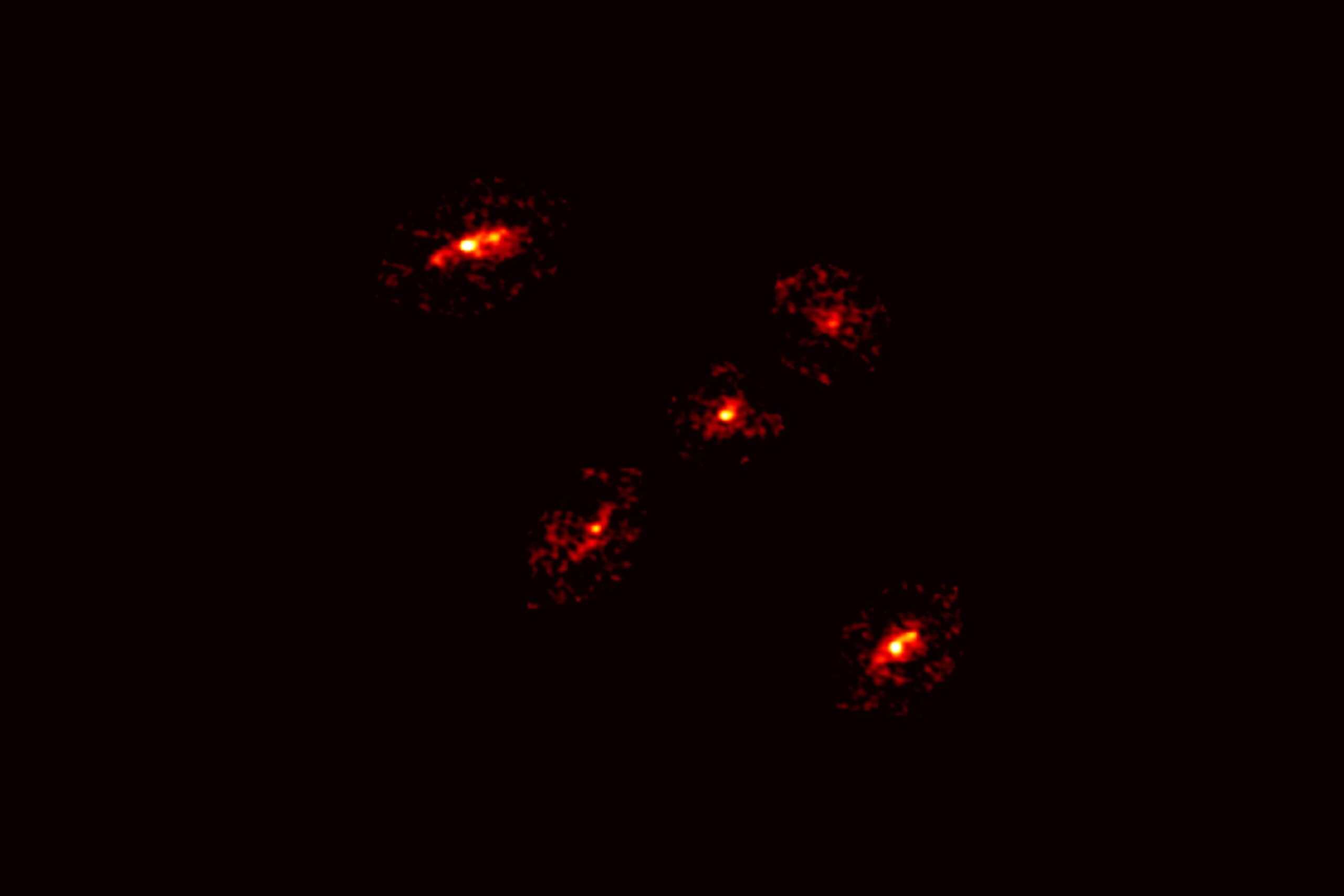According to Einstein’s general theory of relativity, light bends around objects with large masses, such as galaxies. This sometimes causes a phenomenon known as gravitational lensing, which brightens, magnifies, and distorts light from objects behind.
In rare cases, a gravitational lens can even split light passing through it and make it appear multiple times. Such a phenomenon is called an “Einstein’s cross” due to the shape that these split repetitions of light form.

The Einstein’s cross G2237+0305 observed in September 1990 by the Hubble Space Telescope.
PHOTOGRAPH: NASA, ESA, AND STSCI
A new Einstein’s cross has recently been observed and described in a scientific paper. The discovery was made by a research team from the Atacama Large Millimeter/Submillimeter Array (ALMA), a space telescope located in northern Chile, using observation data from ALMA and other telescopes. The light of the cross comes from HerS-3, a galaxy located 11.6 billion light years away, with the gravitational lensing being generated by four giant galaxies located between HerS-3 and the Earth. These giant galaxies are located some 7.8 billion light years away.

The gravitational lensing not only splits the light source, but magnifies it, allowing a detailed view of the light source behind the lens. Thanks to this, the team says that HerS-3 appears to be a bright starburst galaxy—a galaxy undergoing explosive star formation—and was formed at a time when star formation was at its peak throughout the universe. HerS-3 also has a tilted, rotating disk, from the center of which gas is gushing out at a furious rate, the team say.
“Thanks to this natural telescope, we can zoom into regions 10 times smaller than the Milky Way, almost 12 billion light-years away, and in the process infer hidden matter in the light-of-sight,” said Hugo Mesias, a coauthor of the paper, in a statement.
A Giant Dark Matter Halo Revealed
At first glance, the Einstein’s cross of HerS-3 appears to have been created solely by gravitational lensing generated by the four giant galaxies located between HerS-3 and Earth. However, using a precise model of gravitational lensing, the team found that the observable mass of these four giant galaxies is insufficient to explain the arrangement of the five images of the cross: their mass is simply not great enough to produce the visual effect seen.
“The only way to reproduce the remarkable configuration we observed was to add an invisible, massive component: a dark matter halo at the center of the galaxy group,” said lead author Pierre Cox, from the Institut d’Astrophysique de Paris.

The reddish light in the square frame on the right is a magnified version of the Einstein’s cross from HerS-3. The bright objects (G1-G4) in the left frame are the four giant galaxies that are generating the gravitational lensing. The yellow star marker (DM) indicates the location of a massive dark matter halo in the population of galaxies that includes the four giant galaxies.
PHOTOGRAPH: P. COX ET AL / ALMA (ESO/NAOJ/NRAO) / NOEMA
A dark matter halo is a mass of dark matter that has gravitationally assembled on its own. The mass of this halo affecting the light from HerS-3 is believed several trillion times that of the sun.
Dark matter is material that is theorized to exist in space, but which can’t be seen with visible light; it is thought to account for about 85 percent of the total mass of the universe. The Einstein’s cross formed by HerS-3 may, the research team hopes, provide a unique means for studying the influence of dark matter on the formation of galaxies in the early universe.
This story originally appeared on WIRED Japan and has been translated from Japanese.




